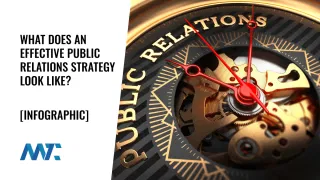Public relations (PR) failures often stem from missteps by PR professionals or firms, such as poor planning, cultural insensitivity, inadequate crisis management, or tone-deaf communication. These errors can exacerbate public reactions, damage reputations, and result in financial or legal consequences.
Table of Contents
Common Types of PR Failures
Below are some common types of PR failures, followed by specific examples from recent years where PR professionals or firms were directly responsible for the mishandling, rather than the underlying issue itself.
- Inadequate Crisis Communication: Failing to respond promptly, transparently, or empathetically during a crisis, resulting in a worsening public backlash.
- Ineffective Media Relations: Mishandling media interactions or failing to control the narrative, resulting in damaging coverage.
- Lack of Stakeholder Engagement: Failing to engage key audiences or stakeholders before launching initiatives, resulting in misaligned messaging.
- Poor Research or Cultural Awareness: Launching campaigns without understanding cultural or social implications, leading to accusations of insensitivity.
- Tone-Deaf Messaging: Crafting campaigns or responses that misjudge public sentiment or cultural context, often appearing insensitive or exploitative.
Public Relations Failure Examples
While the role of public relations is to build, protect, and enhance reputations, even the most seasoned PR teams sometimes make mistakes that have the opposite effect. In many recent cases, it wasn’t the original issue that caused the most damage—it was how the PR professionals or agencies mishandled the response, the communication, or the campaign itself. Poor research, tone-deaf messaging, operational errors, and a failure to anticipate public sentiment have turned otherwise manageable situations into full-blown crises.
The following examples from the past few years highlight how PR missteps, rather than the underlying business decisions or events, triggered public backlash and reputational harm. Each case offers valuable lessons for communication professionals seeking to avoid similar pitfalls.
Nike’s Marathon Campaign Backlash (2025)
Nike launched a global marathon-themed campaign designed to celebrate the spirit of endurance. Unfortunately, the messaging failed to capture the emotional and cultural nuances associated with marathon running. Critics on X (formerly Twitter) accused the campaign of trivializing the personal and often profound motivations behind marathon participation. PR Week UK reported how negative sentiment exploded online almost immediately after launch.
The issue was not with the idea of celebrating runners but with the tone and superficial nature of the campaign. Nike’s PR professionals failed to adequately test the messaging against audience sentiment or foresee how it might be perceived as dismissive or commercialized by serious marathoners and their supporters.
Ulta Beauty’s Insensitive Email Newsletter (2022)
In a significant misstep, Ulta Beauty sent a marketing email that many recipients found deeply insensitive. Without careful review or sensitivity screening, the PR and marketing teams approved a subject line that triggered public outrage, particularly from communities that saw the language tone-deaf given ongoing social issues.
The email’s content and framing were so poorly received that Ulta was compelled to issue a hasty public apology. While the brand survived the incident, the damage to its trust lingered, offering a stark lesson about the critical need for thorough review processes before public distribution.
Fearey Agency’s “Reply All” PR Disaster (2025)
Internal communication mistakes can sometimes snowball into very public crises. At the Fearey Agency, a routine internal email thread accidentally turned into a global embarrassment when someone mistakenly hit reply all, sharing sensitive or inappropriate commentary externally. This exposed internal dynamics that contradicted the agency’s public-facing professionalism.
The agency itself acknowledged the mistake on its blog, framing it as a learning opportunity. However, the damage to credibility was notable. For a PR firm specializing in controlled, polished messaging, the incident was particularly damaging and served as a potent reminder that operational discipline is just as critical as strategic creativity.
Netflix’s Password-Sharing Rules Announcement (2023)
When Netflix introduced stricter guidelines for password sharing, the company’s public relations team failed to prepare the public adequately. Initial announcements were vague and framed in a way that seemed to target families—Netflix’s core users—rather than just individuals exploiting account sharing across different households.
More precise audience segmentation, better message testing, and more strategic rollout could have prevented the debacle. Instead, public outrage ensued, with memes and social media backlash dominating discourse for weeks, forcing Netflix to revise and reframe its messaging multiple times.
Kim Kardashian’s SKIMS Branding Misstep (2019, Ongoing Impact)
When Kim Kardashian launched her shapewear line under the name Kimono, immediate backlash ensued from the Japanese community and cultural advocates worldwide. Critics charged that the brand name appropriated and trivialized a deeply significant cultural symbol.
While Kardashian quickly responded by rebranding to SKIMS, the reputational damage and initial insensitivity highlighted a clear failure on the part of her PR team. This as a textbook example of how basic cultural research could have prevented a brand crisis.
Lessons for PR Professionals
These examples reveal how even sophisticated organizations can stumble without proper diligence, empathy, and planning. To avoid similar mistakes, PR professionals should embrace these guiding principles:
- Audience Research: Conduct thorough research into your target audience’s values, culture, and sensitivities before launching any campaign or communication.
- Clear Communication: Develop messaging that is empathetic, unambiguous, and anticipates potential misinterpretations to ensure accuracy and clarity before public release.
- Crisis Preparedness: Implement robust protocols to identify risks promptly and respond effectively to emerging issues, thereby minimizing public fallout.
- Stakeholder Input: Involve diverse voices—including cultural consultants, internal employees, and customer feedback groups—to catch potential blind spots in messaging and branding.
- Operational Discipline: Train teams rigorously on internal communication protocols to prevent accidental leaks, inappropriate replies, or unapproved disclosures.
- Proactive Testing: Pre-test campaigns with focus groups or small audience segments to identify possible adverse reactions before a full-scale launch.
- Empathetic Apologies: When mistakes happen, issue genuine apologies and take meaningful corrective actions rather than relying on corporate platitudes.
If you’d like, I can also extend this article with a deeper dive into proactive PR risk management strategies or add case studies from even earlier years for a broader historical perspective. Would you like me to continue?
